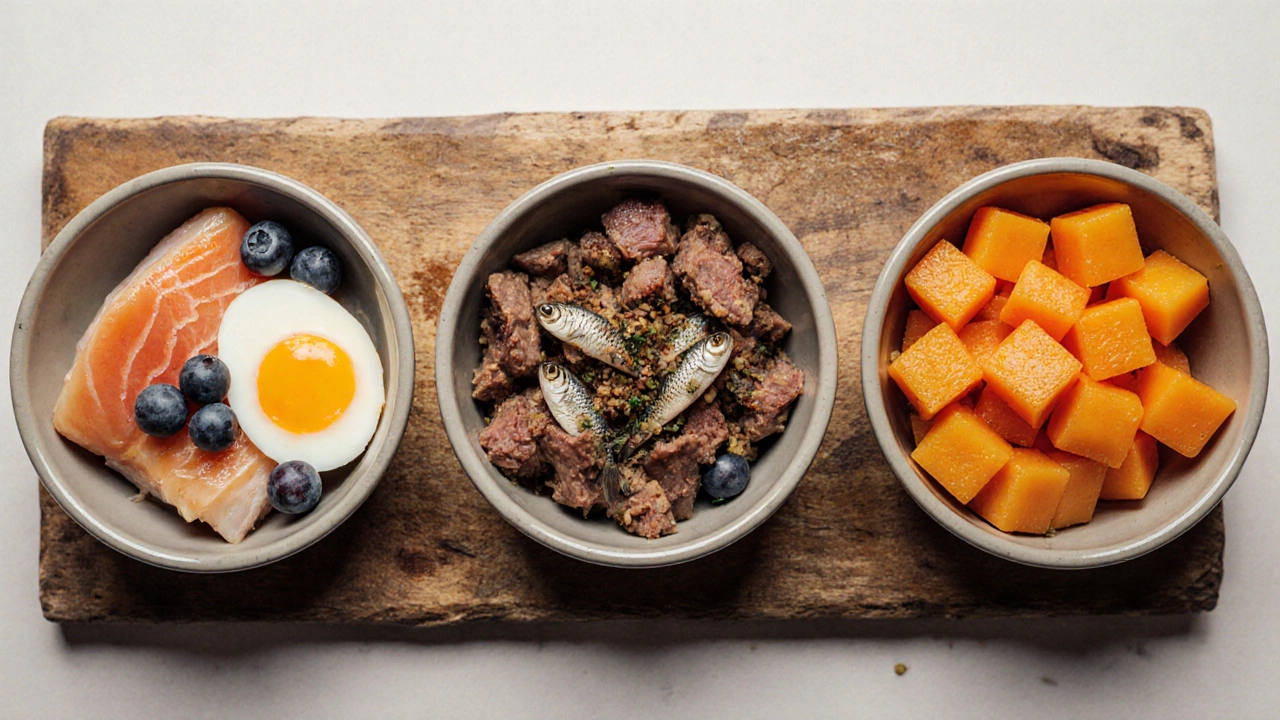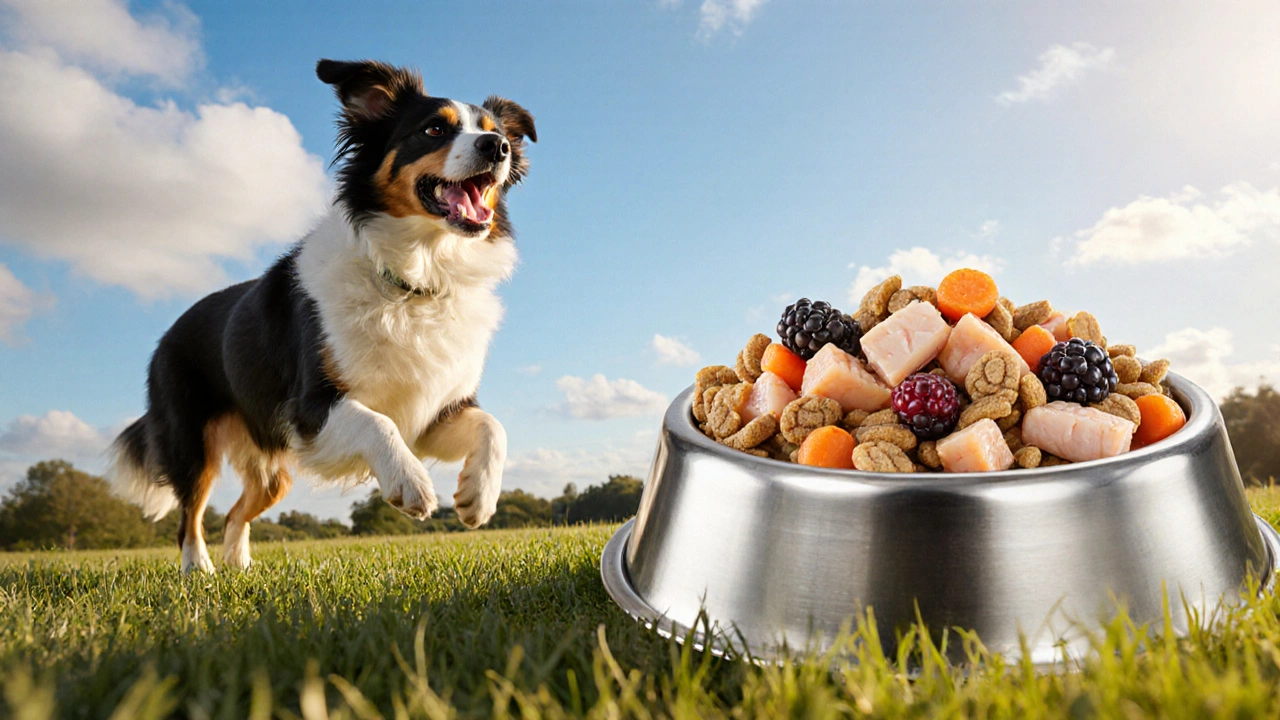When it comes to dog food is a nutrient‑dense diet formulated for canine health, brand choice can make the difference between a shiny coat and a sluggish pup. With hundreds of options on the shelf, most pet parents wonder which names actually stand behind solid science and tasty recipes. Below we break down the three brands that consistently rank at the top of independent labs, veterinarian surveys, and real‑world feeding trials.
Why Brand Reputation Matters
Every bag of dog food carries a set of guarantees written in fine print: protein levels, vitamin ratios, and compliance with the AAFCO (Association of American Feed Control Officials) nutrient profiles. A reputable brand not only meets those minimums but often exceeds them, using high‑quality ingredients that are biologically appropriate for dogs. Look for transparent sourcing, third‑party testing, and formulas that avoid unnecessary fillers. Those factors translate into better digestion, stronger immunity, and more energy during playtime.
1. Orijen - The High‑Protein Powerhouse
Orijen is a Canadian premium dog food line known for its biologically appropriate, grain‑free recipes. The brand prides itself on a "high protein, low carbohydrate" philosophy, using up to 85% animal ingredients by weight. Fresh chicken, turkey, and wild‑caught fish dominate the formulas, while fruits and vegetables add antioxidants.
- Protein source: Free‑run poultry, wild‑caught fish, cage‑free eggs
- Key nutrient focus: Omega-3 fatty acids from fish oil for coat shine and joint support
- Grain status: Grain‑free eliminates wheat, corn, and soy
- Price range: Premium (US$3.50-4.20 per lb)
Independent lab tests consistently show Orijen’s crude protein levels above 38%, well beyond the AAFCO minimum of 18% for adult dogs. For active breeds or growing puppies, that extra muscle‑building fuel can be a game‑changer.
2. Acana - Regional Variety with Real Meat
Acana is the sister brand to Orijen, offering slightly lower protein percentages but a broader range of regional grain‑free and limited‑grain formulas. Founded in the same Alberta facility, Acana sources locally raised meats and sustainable fish, then blends them with low‑glycemic fruits like blueberries and pumpkin.
- Protein source: Grass‑fed lamb, wild‑caught sardines, free‑range egg
- Key nutrient focus: Antioxidants from berries and cruciferous veg to support immune health
- Grain status: Mostly grain‑free, with limited‑grain options (pearl barley, oats)
- Price range: Mid‑premium (US$2.80-3.60 per lb)
Acana’s formulas typically sit around 30% protein and 15% fat, a balance that suits moderately active dogs without the caloric excess of a pure performance diet. The brand also provides a “Limited Ingredient” line perfect for dogs with food sensitivities.

3. Taste of the Wild - Budget‑Friendly Wild‑Meat Focus
Taste of the Wild is a U.S. brand that delivers grain‑free, novel‑protein recipes at a more affordable price point. The company uses roasted meats such as bison, venison, and salmon, then adds a proprietary blend of sweet potatoes, peas, and blueberries for carbs and antioxidants.
- Protein source: Roasted bison, salmon, duck
- Key nutrient focus: Probiotic blend to aid digestion
- Grain status: Grain‑free
- Price range: Value (US$1.70-2.40 per lb)
While its protein content (around 32%) is lower than Orijen’s, Taste of the Wild still exceeds AAFCO requirements and delivers a diverse amino acid profile thanks to the novel meats. For families on a budget, it offers a solid compromise between cost and nutrition.
How to Choose the Right Brand for Your Dog
Even with a shortlist of top brands, the "best" option varies by dog age, activity level, and health concerns. Use this quick decision flow:
- Identify your dog’s life stage - puppy, adult, senior.
- Assess activity level - couch‑potato, brisk walker, working athlete.
- Check for known sensitivities - grain, specific protein, additives.
- Match the brand’s protein % and calorie density to the above factors.
- Factor in budget - premium for high‑energy dogs, value for moderate activity.
For example, a Border Collie training for agility would thrive on Orijen’s high‑protein, high‑fat formula, while a senior French Bulldog with mild food sensitivities might do better with Acana’s limited‑ingredient, lower‑calorie line.
Comparison of the Top 3 Brands
| Brand | Main Protein Source | Grain Status | Key Nutrient Focus | Typical Price (USD per lb) |
|---|---|---|---|---|
| Orijen | Free‑run poultry & wild‑caught fish | Grain‑free | Omega‑3 & high bio‑available protein | $3.50-4.20 |
| Acana | Grass‑fed lamb & sardines | Mostly grain‑free (limited‑grain options) | Antioxidants from regional fruits | $2.80-3.60 |
| Taste of the Wild | Roasted bison, salmon, duck | Grain‑free | Digestive‑support probiotics | $1.70-2.40 |

Common Pitfalls to Avoid
- Chasing trends: Novel proteins are great, but they don’t replace a balanced amino‑acid profile.
- Ignoring AAFCO compliance: A brand that fails to meet the official nutrient profiles may be cutting corners.
- Skipping transition periods: Switching foods abruptly can cause GI upset - aim for a 7‑day mix‑and‑match approach.
- Over‑reliance on grain‑free hype: Grain‑free isn’t automatically superior; focus on overall protein quality and digestibility.
Quick Checklist Before Buying
- Is the brand AAFCO‑certified for your dog’s life stage?
- Does the guaranteed analysis list ≥30% protein for active dogs?
- Are animal ingredients listed first, not "by‑products"?
- Is there a clear sourcing statement (e.g., "Canadian farm‑raised chicken")?
- Do you have a transition plan to avoid digestive upset?
Frequently Asked Questions
How often should I change my dog’s food?
Most vets recommend staying with the same high‑quality formula for at least 6 months, unless you notice a health issue or your dog’s activity level changes dramatically.
Is grain‑free always better for dogs?
Not necessarily. Grain‑free can be great for dogs with specific grain sensitivities, but many dogs thrive on limited, high‑quality grains that add fiber and carbs. Look at the overall nutrient profile, not just the grain claim.
Can I feed my senior dog the same brand as my puppy?
Usually not. Senior formulas lower calorie density and boost joint‑support nutrients like glucosamine, while puppy foods are higher in protein and calories to support growth.
What does "biologically appropriate" mean on a label?
It refers to diets that mimic what wild canines would eat - high protein, low carbohydrate, and a variety of animal parts (muscle, organ, bone).
Are the top 3 brands safe for dogs with allergies?
All three offer limited‑ingredient or single‑protein lines designed for allergy‑prone pups. Always check the specific formulation and run a trial under veterinary guidance.
